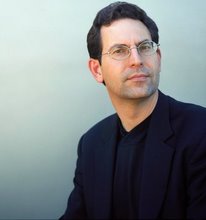 Boston's Beth Israel Deaconess Medical Center is gearing up to get data from patients' consumer devices like Fitbit, Jawbone UP, or Withings weight scale into their EHR, according to CIO and emergency room physician Dr. John Halamka. Halamka says a number of factors make now the time for patient-generated data: devices have reached the maturity and ease of use needed to be a part of people's care regimen; changing payment models are incentivizing the shift; and the emergence of middleware like Apple's HealthKit will present hospitals with the piece that's hitherto been missing in the patient generated data puzzle.
Boston's Beth Israel Deaconess Medical Center is gearing up to get data from patients' consumer devices like Fitbit, Jawbone UP, or Withings weight scale into their EHR, according to CIO and emergency room physician Dr. John Halamka. Halamka says a number of factors make now the time for patient-generated data: devices have reached the maturity and ease of use needed to be a part of people's care regimen; changing payment models are incentivizing the shift; and the emergence of middleware like Apple's HealthKit will present hospitals with the piece that's hitherto been missing in the patient generated data puzzle.
"In Massachusetts, it turns out fee for service is dying fast and being replaced with alternative quality contracts," Halamka told MobiHealthNews. "Blue Cross pays you for wellness, not sickness. The idea of ordering five MRIs doesn’t get reimbursed; it’s ‘Here’s a fixed dollar amount to keep you healthy.’ And so hospitals and ACOs are now looking at continuous wellness, as opposed to more procedures, more hospitalizations, and more ED visits. It’s great that Withings or Jawbone or whatever is collecting this data on their website, but what I, as a CIO, need to do is gather the data on your medical record, inpatient, outpatient, devices in your home, and understand what I can do to keep you well."
Halamka offered up his own Withings Pulse O2 tracker and weight scale as an example of what's possible now from low-cost consumer trackers.
"You can look at my iPhone and say, 'Oh, over the last week I walked 80,000 steps, my weight’s 170, my percentage of body fat is 8 percent. I’m sleeping 4 hours a night which is deep sleep followed by punctuated light sleep, followed by getting up once,'" he said. "I now have from a $100 device a complete understanding of activity of daily living and my basic functions as a human. That’s a maturity of technology and consumerization and ease of use that just didn’t exist until recent history."
Upcoming software like HealthKit, and similar offerings from Google and Samsung, could ease the safe and secure transition of that data into the EHR.
"You will, through the device that you have, your mobile phone, be able to use middleware integration to the various kinds of telemetry in your home, and therefore [have] a single point of interaction between your phone and the EHR," Halamka said. "Not 100 points of interaction between your Fitbit, your Jawbone, your Nike shoes and the EHR, which is an interfacing impossibility."
He envisions Beth Israel Deaconess creating an app, to which patients will give Apple's Health app permission to send their data. Apple will be responsible for keeping data safe and secure within the patient's phone, and the Beth Israel app will figure out how to create a safe pipeline to send that data to a dashboard monitored by specially-hired care managers, which Halamka refers to as "care traffic controllers."
"This is exactly what has been in production for the last year or so," Halamka said. "When a patient goes to an inpatient emergency department or outpatient visit, an electronic summary of all the events that happened at that care space go to a central data repository where these care traffic controllers are able to see a dashboard of all patient activity. So it is data [that] providers are generating. We don’t yet have the benefit of these care traffic controllers seeing the data the patients are generating. And that’s where I believe the technology is just coming into maturity to the point where I can make that a reality."
The hospital will let patients opt in to collecting both passive data from devices and actively entered survey data like mood, pain scores, and functional status. Nothing will be required of consumers, although the hospital might incentivize data collection with lower costs. Mostly, Halamka thinks patients will collect data for themselves, the way some have already begun to do.
"My team and I implemented the first personal health record with patient-doctor shared decision-making and communication in 1999," Halamka said. "In 2014, it is now a requirement of Meaningful Use that every doctor in America does this. Ok, so 15 years from bleeding edge to regulation. And my sense of our technology world is that the pace of change is accelerating. So what was a 15-year time is probably like a 5-year horizon now. The likelihood [is] that we’ll see higher deductibles in our health plans happening now, the likelihood [is] that we’ll be able to manage our disease states and wellness through the use of mobile devices beginning now, but [it will be] really ubiquitous, mainstream in five years."

















